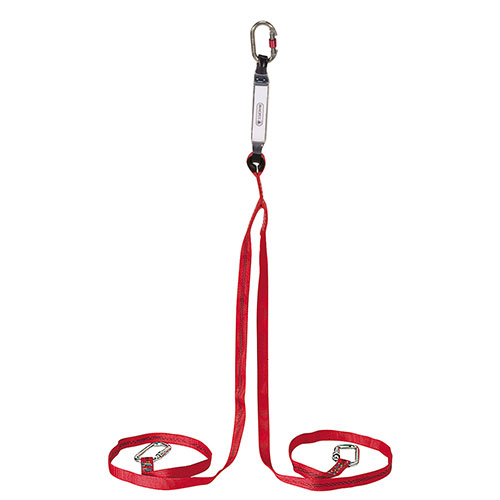For warehouse and factory workers, equipment is crucial for daily work life; not only can equipment and work machinery make life easier, but they also allow a worker to complete their tasks safely.
In 2018, it was estimated that more than 22% of all construction-related injuries were caused by the improper handling of objects, or by workers lifting objects that were too heavy. Your workers should feel safe in their place of work, confident that the equipment they use will prevent injury and allow them to complete their daily tasks more efficiently. In a business sense, quality work equipment like scissor lifts or palette trucks is essential if you want to reduce the number of sick days that your employees’ take or reduce the likelihood of providing compensation for their injuries.
When it comes to choosing work equipment, scissor lifts should be at the top of your list as they are great for manual handling and lifting; they are able to lift even the heaviest of objects and can reach some of the highest parts of the warehouse shelves. They can perform handling and lifting tasks that you simply could not achieve with a ladder or your bare hands. However, when you don’t know too much about scissor lift operation, it can be hard to decide which scissor lift is suited to the needs of your company; even after you’ve invested in a scissor lift, you might not be using the piece of equipment to its full capacity or you could be utilising it in an unsafe manner. Luckily for you, we have compiled a scissor lift guide, containing everything you need to know about this equipment and how it can help your business to thrive.
Different types of scissor lifts
You would be surprised at just how many scissor lifts there are on the market, each one with a different purpose. The scissor lift you choose depends on a variety of factors, including the weight of objects you need to transport, the height of the shelves in the warehouse, and how many objects you need to transport at one time. Here’s a quick breakdown of the different scissor lifts available:
Scissor lift tables
Designed with mobility in mind, scissor lift tables are ideal for workers who need to transport items from point A to B and also lift heavier products. With rotating and tilting platforms, you can transport items to even the most awkward areas of the warehouse with ease. Different scissor lifts are able to handle different weights, so select the scissor lifts that can best handle your unique workplace needs; if you’re looking for a sturdier piece of equipment able to hold even the heaviest of weights, then a heavy duty mobile scissor lift could be just the thing you’ve been searching for. If you’re looking for more height out of your scissor lift, then a <a href=”https://www.shshandlingsolutions.com/handling-equipment/mobile-scissor-lift-tables/scissor-lift-truck.html“>scissor lift truck</a> might be the ideal solution for your work needs, as it has a reach of up to 1500mm.
Scissor lift platforms
Platform scissor lifts are a lot more static and ideal for workplaces that value safety and sturdiness, which is ideal if you’re working with slightly bulkier objects. A low profile stainless steel scissor lift can hold weights of up to 2000kg and will work reliably for years to come. If you need a machine that can cope with double the weight, then twin scissor lift tables might be the ideal piece of equipment for you. A scissor table with a ramp uses only the most advanced technology to make your work tasks run smoothly, making it easier to place the objects onto the scissor lift itself.
What to look for when purchasing your own scissor lift
Scissor lift production has really advanced over the years and now there is a device to suit most individual work preferences and requirements. When it comes to purchasing your own scissor lifts, there are certain things you should look out for to ensure that you’re getting the best value for your money.
Quality
It’s better to invest in scissor lifts that are guaranteed to last you a long time instead of second hand machines that have been mistreated over the years. Invest in a company that sells brand new products to make sure the exterior isn’t worn or rusted.
Weight
Different warehouses stock different products of varying weights. Not every scissor lift will be able to accommodate every weight, so make sure you check the manufacturing guidelines before you make an investment.
Height
Whether you need the machines to reach the towering heights of shelves, or even just to the height of a truck, the reach of your machine makes a huge difference. Some scissor lifts are able to reach higher than others, without compromising the stability of the machine itself. It might be worth investing in a few different scissor lifts and interchanging them when you need to transport goods to a higher level.
Platform size
When it comes to scissor lifts, size really can matter, especially when it comes to transporting bulkier objects. The larger the platform, the more awkwardly shaped items that can be placed on the surface. Machines with a larger platform size tend to be more stable and able to transport a lot more items at once.
How to use a scissor lift most efficiently
A scissor lift is such an easy machine to use and it’s also an invaluable device to have in the workplace because it has many different functions. It’s most commonly used as a device to get to hard to reach places. Most scissor lifts use a foot pump to raise products; no matter how heavy the load of products are, the foot pump is easy to use and you won’t struggle to transport the different objects. However, there are other devices that don’t need to be manually operated: electric scissor lifts don’t require as much manual labour and are as capable of lifting heavier weights but it ought to be considered how they aren’t as mobile.
Due to the sterile nature of the stainless steel devices, our scissor lifts can be used in a variety of workplaces and warehouses; if you’re dealing with medical equipment, you can feel assured that these machines won’t contaminate the goods and will only make the process smoother.
A big part of working in a factory or warehouse requires transporting goods from a truck and onto the shelves of the workplace. Luckily, a hydraulic scissor lift can help with this as many are designed to be mobile: it’s easy to navigate the devices and steer them to your desired location. The sturdy wheels are designed to navigate a variety of surface areas, meaning that that can even be used in outdoor areas where the terrain is rough or rocky.
If you want your scissor lift to work at its optimum capacity, it’s important to treat your scissor lift with great care. If you treat your device well, it’s likely that it will remain with you for a lifetime. It’s important to remove residue and dirt build up on your devices to ensure that they remain in top working order. Warm water and a damp cloth are all you need to give your scissor lift a thorough clean, but make sure it’s completely dry so that it doesn’t rust.
Safety precautions when using a scissor lift
These devices might make your workday run smoothly, but as with every machine, there are certain safety precautions that you should take to ensure that you and the other people around you are as safe possible.
1. Ensure items are secure
When you’re loading onto the scissor lift, it’s important for the items to be placed as centrally as possible. Items that hang over the edge or are unstable are likely to fall off; not only could this damage the product itself, but it could also cause an injury to yourself or those around you.
2. Never overload the machine
Your scissor lift’s handbook will specify the weight of items it’s able to hold. It’s always better to underload than to overload as this can end up damaging your machine, or even injuring the operator. If a machine is overloaded, it can become unstable as it’s raised higher; this can cause the machine itself to topple and fall over.
3. Train staff
No matter the machine, all members of staff should be trained on how to operate a vehicle as a lack of education is often the cause of many workplace injuries. If a disaster should strike, the staff will know how to cope with an emergency and fix any issues that arise.
4. Be vigilant when mobile
When transporting goods from the truck to the warehouse shelves, you’ll have to navigate the machine and the products it’s carrying through crowds of bustling people. Try not to rush when making this journey and make your presence known to the other workers. If you own a factory or warehouse, consider designating specific areas to machinery use so that regular workers or pedestrians can avoid it.
5. Understand what the device is for
The scissor lifts at SHS Handling Solutions are only intended to deliver stock and shouldn’t be used to transport people. Doing so would be a safety hazard and you could risk falling from the device.
Want to revolutionise your workplace? Scissor lifts are a great way to lift and transport heavy objects in a safe and efficient manner; your workplace wouldn’t be the same without them. If you want to get your scissor lift order processed, browse our website or contact a member of the SHS Handling Solutions team who will happily answer any questions that you may have.

